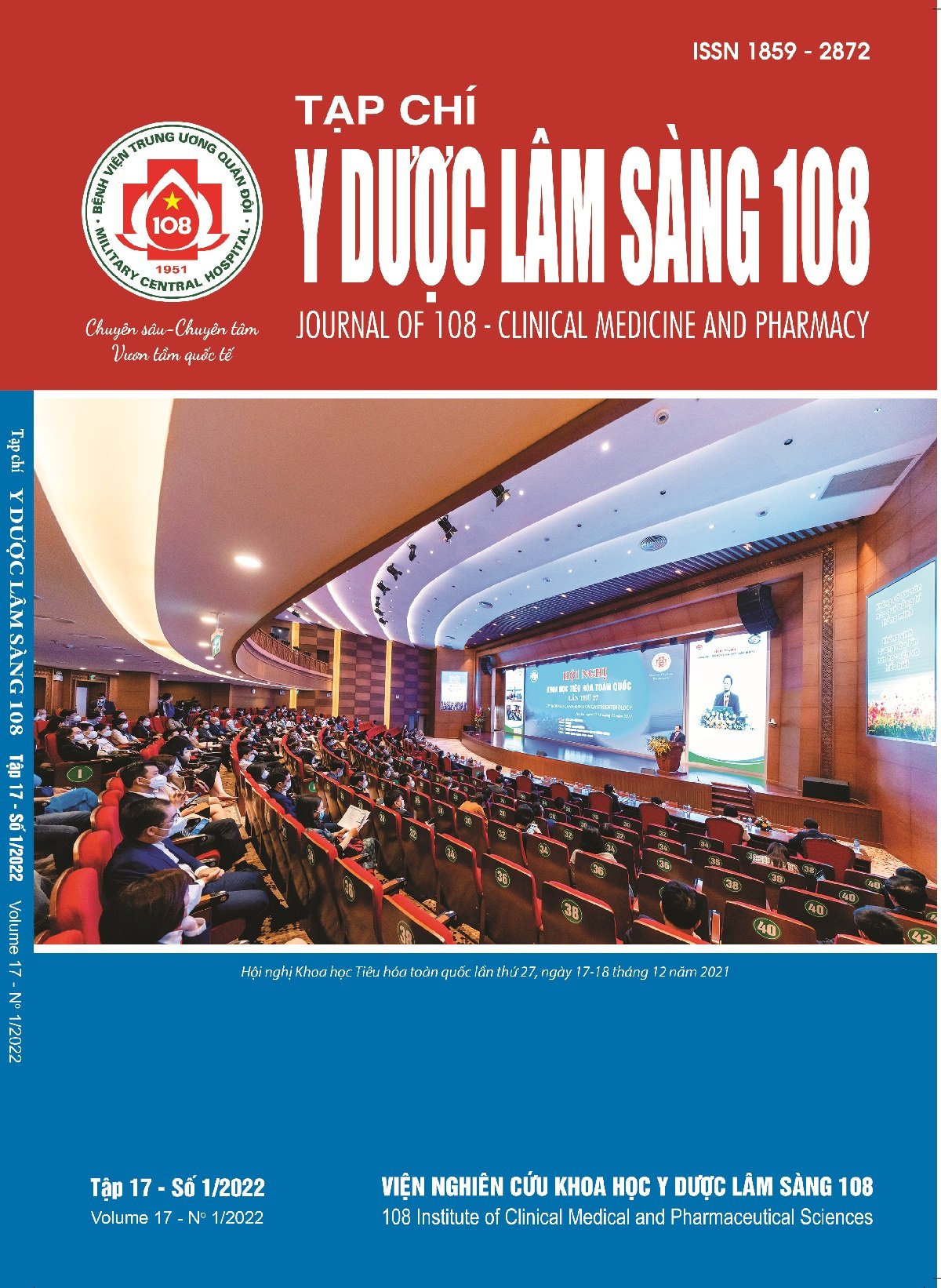Short-term clinical outcomes following percutaneous coronary intervention in triple vessel disease patients with stable ischemic heart disease
Main Article Content
Keywords
Abstract
Objective: The aim of this study was to describe short term outcome in a group of patients with stable three-vessel coronary artery disease patients with Syntax score ≤ 22 underwent percutaneous coronary intervention (PCI). Subject and method: We assigned 177 patients with stable three-vessel disease to undergo PCI in Tam Duc Hospital from 01/2017-10/2020. The disease was defined when ≥ 70% stenosis was present in each major epicardial coronary artery with Syntax score ≤ 22. The cross-sectional descriptive and prospective study, documented clinical sign, paraclinical sign and coronary risk factors. Result: The mean Syntax score was in 15.84 ± 3.85 (7 - 22), and high prevalence lesion was in LAD: 98.9%, LCX: 99.4%, RCA: 100%, the prevalence of left main coronary heart disease was 14.8%. No significant between complete and incomplete revascularization group. High prevalence of successful procedure 96.6%. There was a significant improvement in in the grade of angina post PCI: CCS ≤ 1 or CCS 0 : 98.3%. And ST-T change on ECG: 1.7%. vs 19.2% pre-PCI. 12 months post PCI, there was a significant improvement in the grade of angina CCS ≤ 1: 93.2%, and CCS 0: 89.3%. And ST-T change on ECG: 10.2% vs. 19.2% pre-PCI. LDL reduction ≥ 50%: 49.2% vs 0% pre-PCI, target LDL-C ≤ 1.4mmol/L: 20.3% vs. 4.0% pre-PCI, signicantly improved average LVEF (%) Simpson: 68.06 (± 11.69) vs 60.34 (± 11.75) pre-PCI and significant statistic difference. Rates of cumulative major adverse cardiac at 12 months were 10.7% and significantly higher in the incomplete revascularization group vs complete revascularization group (13.3%, vs. 2.4%, p<0.05). Conclusion: High rate of procedural success and improvement of symptoms, rate of ST-T change is lower after PCI. Improvement of symptoms (CCS), ST-T change and LVEF after PCI. Rates of cumulative major adverse cardiac event at 12 months were low and as compared with incomplete revascularization, complete revascularization PCI resulted in lower rates of the combined end point of major adverse cardiac at 12 months.
Article Details
References
2. Nguyễn Trường Sơn và cộng sự (2020) Thực hành chẩn đoán và điều trị bệnh động mạch vành. Ban hành kèm theo Quyết định số 5332, Bộ Y tế.
3. Bhatt DL et al (2006) International prevalence, recognition, and treatment of cardiovascular risk factors in outpatients with atherothrombosis. JAMA 295: 180-189.
4. Arroyo-Rodríguez C et al (2018) Risk factors for three-vessel coronary artery disease in patients of Northwest Mexico. Arch Cardiol Mex 88(5):423-431.
5. Gibson MC et al (2004) Coronary and myocardial angiography angiographic assessment of both epicardial and myocardial perfusion. Circulation 109: 3096-3105.
6. Bainey KR et al (2021) Long-term clinical outcomes following revascularization in high-risk coronary anatomy patients with stable ischemic heart disease. J Am Heart Assoc 10: 018104.
7. Thygesen K et al (2019) Fourth universal definition of myocardial infarction. European Heart Journal 40: 237–269.
8. Davidsen L et al (2020) Long-term impact of baseline anaemia on clinical outcomes following percutaneous coronary intervention in stable angina. Open Heart 7: 1319 .
9. Patel MR et al (2017) ACC/AATS/AHA/ASE/ ASNC/SCAI/SCCT/STS 2017 appropriate use criteria for coronary revascularization in patients with stable ischemic heart disease. J Am Coll Cardiol 69(17): 2212-2241.
10. Riddle MC et al (2020) Standards of Medical care in diabetes 2020. Diabetes Care 43(1): 14-32.
11. Serruys PW et al (2009) Percutaneous coronary intervention versus coronary-artery bypass grafting for severe coronary artery disease. N Engl J Med 360: 961-72.
12. Paudel R et al (2015) Association of chest pain versus dyspnea as presenting symptom for coronary angiography with demographics, coronary anatomy and 2-year mortality. Arch Med Sci 12: 742–746.
13. Cunha SC et al (2016) Clinical outcomes of percutaneous intervention in triple-vessel and left main coronary artery diseases. International Journal of Cardiovascular Sciences 29(4): 262-269.
14. Head SJ et al (2014) Coronary artery bypass grafting vs. percutaneous coronary intervention for patients with three-vessel disease: Final five-year follow-up of the SYNTAX trial. European Heart Journal 35(40): 2821-2830.
 ISSN: 1859 - 2872
ISSN: 1859 - 2872
